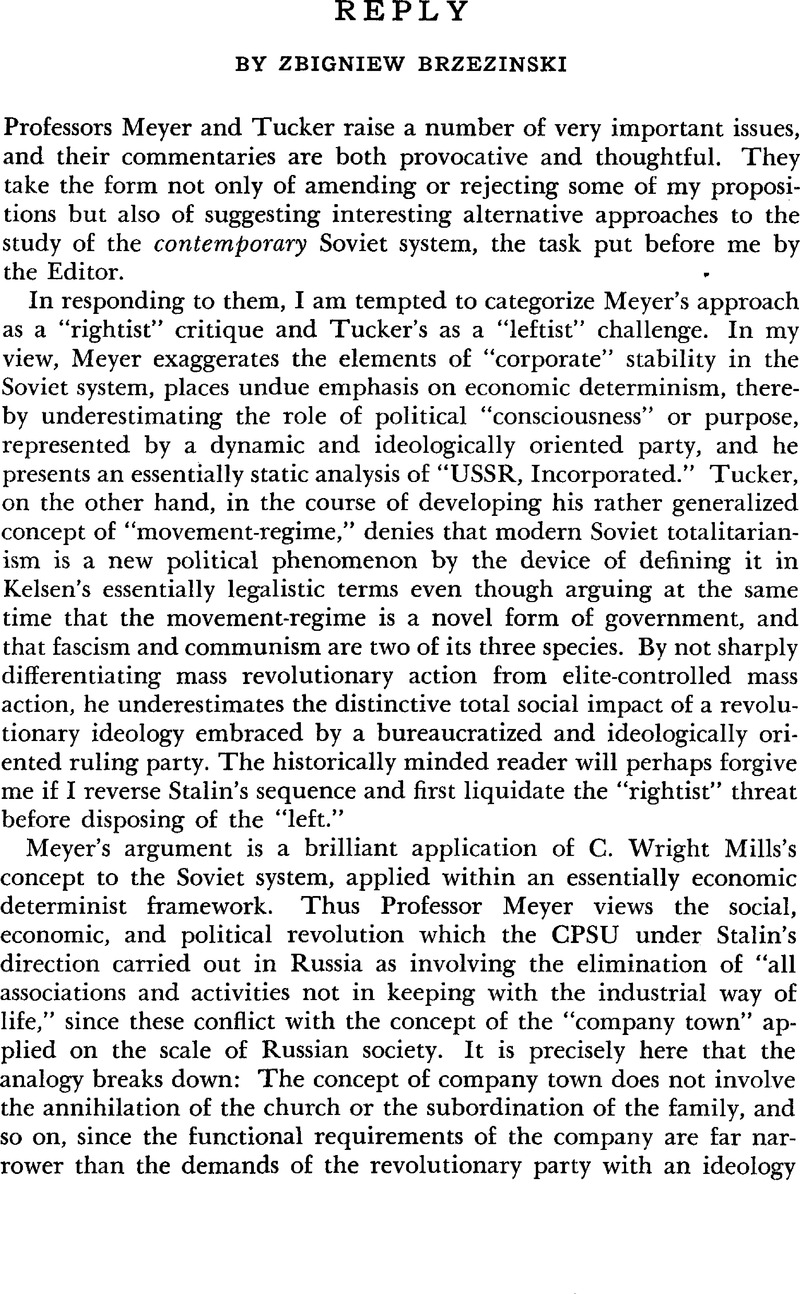No CrossRef data available.
Article contents
Abstract

- Type
- Discussion
- Information
- Copyright
- Copyright © Association for Slavic, East European, and Eurasian Studies 1961
References
1 I have defined it elsewhere as “ … a system where technologically advanced instruments of political power are wielded without restraint by a centralized leadership of an elite movement, for the purpose of effecting a total social revolution, including the conditioning of man, on the basis of certain arbitrary ideological assumptions proclaimed by the leadership, in an atmosphere of coerced unanimity of the entire population.”
2 For this reason' it is inaccurate to think of Stalin's postwar regime as merely a conservative regime. On the level of innovation, it was; on the level of action it was not, since Stalin was in effect repeating the revolution of the thirties which the war had pushed back. For a full airing of the differences between Tsarism and Soviet totalitarianism, see Part II of The Transformation of Russian Society, ed. Black, Cyril E. (Cambridge, Mass., 1960).CrossRefGoogle Scholar


